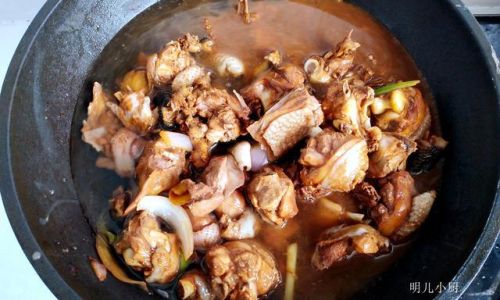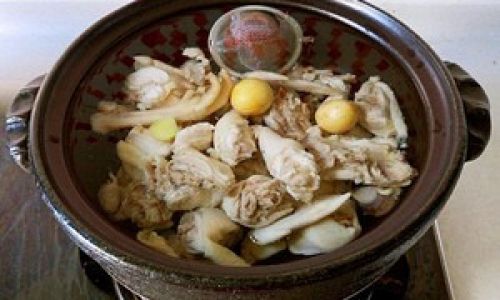Table of content
Spring rolls, with their golden, crispy exteriors and flavorful fillings, are a beloved appetizer across the globe. Whether you’re hosting a party, craving a snack, or looking for a fun cooking project, mastering the art of spring rolls doesn’t have to be intimidating. This recipe strips away complexity, focusing on simplicity without sacrificing taste. With just a handful of ingredients and minimal kitchen tools, you’ll be frying up batches of these delicate treats in no time. Let’s dive into the easiest way to make spring rolls at home.
What Makes This Recipe Simple?
Traditional spring roll recipes often call for elaborate fillings, intricate wrapping techniques, or deep-frying expertise. This version cuts corners without cutting corners on flavor. We’ll use readily available vegetables, a straightforward seasoning mix, and store-bought wrappers to save time. No need to master the art of making dough from scratch—pre-made spring roll wrappers are your best friend here. They’re thin, pliable, and fry up perfectly crispy every time.
Ingredients You’ll Need
Before we start, gather these kitchen staples:

- 12–15 spring roll wrappers (found in the frozen or refrigerated section of most grocery stores)
- 2 cups shredded cabbage (green or purple works; coleslaw mix is a timesaver)
- 1 medium carrot, julienned
- 4–5 fresh mushrooms, thinly sliced (button or shiitake)
- 1/2 cup bean sprouts (optional, for crunch)
- 3–4 garlic cloves, minced
- 1 tbsp fresh ginger, grated
- 1/4 cup green onions, chopped
- 1/2 lb ground pork, chicken, or tofu (omit for vegetarian)
- 2 tbsp soy sauce (or tamari for gluten-free)
- 1 tbsp oyster sauce (or hoisin sauce for a sweeter twist)
- 1 tsp sesame oil
- 1 egg, lightly beaten (or cornstarch slurry for vegan)
- Vegetable oil (for frying)
- Salt and pepper to taste
Step-by-Step Instructions
Prepare the Filling
The filling is the heart of your spring rolls. Keep it light, aromatic, and slightly saucy to prevent the wrappers from drying out.
- Sauté the Aromatics: Heat 1 tbsp of vegetable oil in a large pan over medium heat. Add the minced garlic and ginger, stirring for 30 seconds until fragrant.
- Add Protein (if using): Toss in the ground meat or tofu. Break it into small pieces with a spatula and cook until browned (5–7 minutes). Drain excess fat if needed.
- Vegetables Next: Add the cabbage, carrots, mushrooms, and bean sprouts. Stir-fry for 3–4 minutes until slightly wilted but still crisp.
- Season: Pour in the soy sauce, oyster sauce, and sesame oil. Mix well. Taste and adjust salt/pepper if needed. Remove from heat and let the filling cool completely. Wet fillings will make the wrappers soggy, so patience here is key!
Assemble the Spring Rolls
Working with spring roll wrappers can be tricky at first, but once you get the hang of it, it’s a breeze.

- Thaw the Wrappers: If frozen, thaw them in the fridge overnight or on the counter for 30 minutes. Keep them covered with a damp paper towel to prevent drying.
- Set Up Your Workstation: Lay out a wrapper on a clean, dry surface. Place 2–3 tbsp of filling in a horizontal line near the bottom edge, leaving 1 inch of space on both sides.
- Fold and Roll:
- Fold the bottom edge over the filling.
- Tuck in the sides like an envelope.
- Roll tightly toward the top, sealing the edge with the beaten egg or cornstarch slurry.
- Repeat: Continue until all wrappers are used. Place finished rolls on a tray lined with parchment paper, ensuring they don’t touch (they’ll stick!).
Fry to Perfection
Deep-frying can be daunting, but these tips will ensure crispy, grease-free results:
- Use the Right Oil: Peanut or canola oil works best due to their high smoke points. Fill a deep pan or wok with 2 inches of oil.
- Heat the Oil: Heat over medium-high heat until it reaches 350°F (175°C). Use a thermometer or test by dropping a small piece of wrapper—it should sizzle immediately.
- Fry in Batches: Gently lower 3–4 rolls into the oil using tongs. Fry for 2–3 minutes per side until golden brown. Avoid overcrowding the pan, as this lowers the oil temperature and causes soggy rolls.
- Drain Excess Oil: Transfer cooked rolls to a wire rack or paper towel-lined plate. This keeps them crisp instead of steaming in a closed container.
Pro Tips for Success
- Don’t Overfill: Too much filling makes rolling difficult and increases the risk of bursting during frying.
- Seal Tightly: A loose seal will cause the wrapper to unravel. Use enough egg wash or cornstarch slurry to create a strong bond.
- Maintain Oil Temperature: If the oil gets too hot, the rolls will brown too quickly with raw centers. Too cool, and they’ll absorb excess oil.
- Make Ahead: Spring rolls freeze beautifully! Arrange uncooked rolls on a tray, freeze until solid, then transfer to a zip-top bag. Fry directly from frozen, adding 1–2 minutes to the cooking time.
Variations to Try
- Vegetarian: Swap meat for extra tofu, tempeh, or sweet potato. Add shredded jicama or water chestnuts for crunch.
- Seafood Lover: Use shrimp or crabmeat in the filling.
- Sweet and Savory: Drizzle finished rolls with a mix of honey and chili sauce before serving.
- Baked Option: For a healthier twist, brush rolls with oil and bake at 400°F (200°C) for 15–20 minutes, flipping halfway.
Serving Suggestions
Spring rolls are versatile companions to any meal. Serve them with:

- Dipping Sauces: Sweet chili sauce, peanut sauce, or a tangy soy-vinegar mix.
- Salads: Pair with a crisp Asian slaw or fresh herbs like cilantro and mint.
- Noodle Bowls: Tuck them into a bowl of rice noodles and broth for a hearty meal.
Why Homemade Spring Rolls Rock
Store-bought spring rolls are convenient, but nothing beats the satisfaction of making your own. You control the ingredients, adjusting spice levels, salt, and fillings to suit your taste. Plus, the process of rolling and frying is oddly therapeutic—a meditative kitchen project that rewards you with a plate of golden, crackling perfection.
Troubleshooting Common Issues
- Soggy Wrappers: Ensure the filling is completely cool before rolling. Fry at the correct temperature to prevent oil absorption.
- Burst Rolls: Seal edges properly and avoid overfilling.
- Uneven Browning: Rotate rolls while frying for even color.
Conclusion
Spring rolls might seem like a restaurant-exclusive treat, but this recipe proves they’re achievable at home. With minimal effort, you’ll create a dish that impresses guests, satisfies cravings, and adds a touch of culinary flair to your repertoire. Whether you stick to the classic filling or experiment with bold flavors, these crispy rolls are a testament to the joy of simple, delicious cooking. So, roll up your sleeves, heat that oil, and get ready to savor the fruits of your labor—one crunchy bite at a time.







0 comments